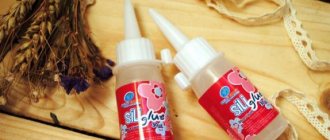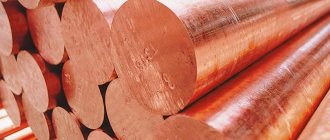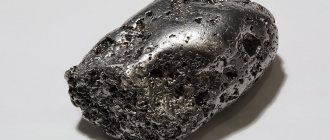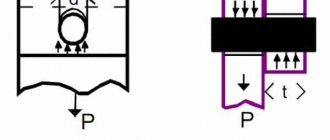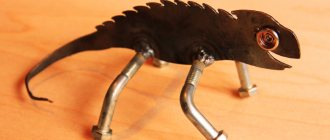Adhesive compositions are fairly easy-to-use means of joining workpieces and parts of various types. Heat-resistant adhesive for metal is no exception in this sense, since it allows you to do without the welding procedure.
Unlike previous times, when adhesives were prepared mainly from natural ingredients, modern manufacturers prefer to use synthetic polymers.
Heat-resistant adhesives belong to the category of special chemical compounds that are characterized by a high degree of resistance to elevated temperatures.
Glue characteristics
Today, adhesives differ in purpose and composition . The main types include: thermoplastic, thermosetting, drying and heat-resistant. The latter type is designed for use in conditions of temperature fluctuations. At high and low temperatures the base does not lose its properties. From the above, we can conclude that heat-resistant adhesives have characteristics that allow them to maintain their properties during temperature changes.
Scope of application
The spectrum of action of thermal adhesive is so wide that it can be considered a universal base. It is used when working with plastics, graphite, metal, etc. This adhesive provides a good effect when applied to glass or ceramics. We can say that this type of glue is used in many industries.
Properties of heat-resistant base
Often, both in production and in everyday life, there is a need to mount or connect certain components that operate at elevated temperatures . Of course, it will not be possible to completely do without welding, but it is possible to connect such components to perform work at high temperatures. The temperature range for heat-resistant adhesive is quite wide, which determines the universal properties of such bases.
Types of adhesives
Thermal adhesives have found widespread use in a variety of substrates designed for environments with thermal shocks. Such foundations minimize the harmful effects of external conditions.
Today, the industry produces various types of heat-resistant adhesives . There are natural and synthetic types on sale. The latter contain additional ingredients (plasticizers) to give them heat, moisture and frost resistance. Both the first and second types are used for installation work with fireplaces, tiles, glass and metal elements. The differences between synthetic and natural adhesives lie in the cost and quality of the composition. The glue is available in the form of a solution or mixture.
Requirements for glue for metal
To select the optimal composition, it is necessary to analyze the operating conditions of the metal product and the requirements for the rigidity of the connection. The type of material, surface configuration and degree of processing are taken into account.
Metal adhesive must have the following properties:
- form a connecting film with good mechanical strength;
- glue resistance to external influences: atmosphere, moisture, temperature and pressure changes;
- After application, no corrosion or other types of damage to the metal should form at the joint.
In domestic conditions, adhesives with an upper temperature limit exceeding +120° are rarely used. Heat-resistant compounds with a high temperature limit are used in the aviation and automotive industries. To ensure a reliable connection under such operating conditions, particularly stringent requirements are imposed on the glue and the technology of its use.
Surface treatment
If we talk about the gluing mechanism itself, it is mainly determined by the composition. Certain compositions are supposed to be applied to the entire surface, others - only by a spot method
Working with metal
When fastening metal elements, several methods are used: gluing, welding or mechanical connection. Gluing requires adherence to a special technique, which consists of a point impact on the target surface. For such work, it is recommended to use heat-resistant glue for metal 300 degrees.
As a rule, to work with metal elements, a special epoxy thermal composition with synthetic plasticizers and additives is used.
High-quality high-temperature metal adhesive can withstand temperatures of about 370 degrees. This determines its widespread use in the installation of heated floors. Hot-melt adhesive is often used in finishing works of saunas, fireplaces, stoves, etc.
Glass bonding
Today people value not only practicality, but also place increased demands on the aesthetic component. This is why, for example, household appliances are often made using various glass elements. Over time, such components may require adjustments. This group includes devices with a high degree of heating .
When operating under elevated temperature conditions, various violations of the integrity of components may occur. Heat-resistant adhesive for glass with organic compounds allows you to easily, quickly and reliably solve such problems without compromising the transparency of the surface.
Oven adhesive
Until recently, clay was the main material for facing hot surfaces. But clay is a rather dirty and labor-intensive material to work with. There are 2 types of adhesives suitable for ovens. These are heat-resistant sealants and adhesives. Both options will allow you to reliably adhere: bricks to each other (hot-melt adhesives) and bricks with different materials (sealants).
Making high-temperature glue with your own hands
It is possible to prepare fireproof heat-resistant glue yourself. The components are easy to find. To obtain a reliable adhesive solution, you need 1 part clay, 1 part cement, 3 parts sand. To impart moisture resistance, ordinary salt is added; the proportion of salt to the total adhesive mass is approximately 1 cup/1 bucket. It is better to mix with a trowel. The degree of fat content of the clay is important. Determine the degree by mixing it with water until creamy. Then applied to the wood, if 2 mm of the mass sticks, then the degree is normal.
The degree of fat content of the clay is important.
Heat-resistant glue has many varieties; to obtain a super reliable connection, you should select the appropriate composition for the type of material that will be glued. It is necessary to work with glue while observing safety precautions to avoid health problems. You can also create a solution with your own hands, the process is simple.
Advantages and disadvantages of hot melt adhesive
In addition to basic properties, thermal compositions have the following qualitative characteristics
The advantages of this glue include the following:
- Hot-melt adhesive is characterized by high fracture strength. Manufacturers, as a rule, determine the degree of bonding strength of surfaces at 1.2 MPa.
- Fast setting and drying. Depending on the temperature and air humidity, the average drying time is about half an hour. The glue can be formed and variously manipulated within 10 minutes.
- Hot-melt adhesive provides reliable and durable adhesion of materials for many years without losing its qualities.
- Heat-resistant adhesive does not change its intended properties under the influence of low and high temperatures. It is used for cladding and masonry in the temperature range from 10 degrees below zero to +35. The positive temperature maximum occurs at +750 degrees.
Among the existing shortcomings (which are mostly insignificant) the following can be noted:
- Quite quick connection of heat-resistant adhesive to the material. This requires fast and precise work to connect components.
- Lack of flexibility and shrinkage.
What is heat-resistant glue - description
Heat-resistant adhesive is understood as a ready-made or powder construction composition made from epoxy resin and metal chips or based on mineral components that can withstand high temperatures during operation. Viscous solutions are used as tile adhesive and a means for lining heated surfaces. The main substance of compositions for gluing household products is epoxy, which ensures the binding of all other components. Also, to achieve the required thickness, elasticity, and safety, heat-resistant adhesive may include:
- modifiers;
- plasticizers;
- setting time regulators;
- sulfur, etc.
Adhesives can be specialized (for metal, plastic, glass, tiles, wood, etc.), as well as universal, suitable for any material. The latter have a clear advantage - they can be used to decorate all parts of the fireplace, since the decorative qualities are usually at a high level.
Scope of application
The products can be used for external and internal work on a wide variety of materials. High-temperature adhesive is suitable not only for heated substrates, but also for ordinary substrates made of alloys and metals, graphite, plastics, ceramics, rubber and most other materials.
Most often, adhesives are used in the furnace industry due to their undeniable advantages: they are easy and quick to prepare and boast technological stability even when applied unprofessionally. Compared to clay solution, modern combined heat-resistant adhesives do not need to be kneaded for a long time, they do not form lumps. In addition to lining the vertical and horizontal surfaces of the stove, you can also use glue for the complete masonry of the entire structure, but you need to choose the highest quality refractory composition. In addition, using glue it is possible to build or decorate:
- hot technological furnaces;
- fireplaces;
- forges;
- cupola furnaces;
- muffle furnaces.
If the glue is heat-resistant, it can be used to repair the glass of an oven, hob, stove, for sealing cords, and installing other components exposed to heat. Some products are even suitable for gluing food utensils because they do not contain toxic compounds.
Properties and types of heat-resistant base
The temperature range at which certain adhesives are used is wide. It is determined by the composition and production technology of the adhesive. Depending on the base, the properties of adhesives differ, so they can withstand different temperature conditions during operation:
- Heat resistant adhesive. At a temperature of at least +140 degrees, this composition functions without reducing the strength characteristics.
- Heat resistant adhesive. Operates from -10 to +300 degrees.
- Heat-resistant (heat-resistant, heat-resistant) glue. It is enhanced in terms of heat resistance and does not lose quality at temperatures up to 1000 degrees.
- Fire retardant adhesive. Tolerates contact with open fire for 3 hours or more, is chemically resistant and does not react with active fuel particles that are present in the visible part of the flame.
- Fireproof glue. Withstands contact with fire for an unlimited time. By default it is heat resistant.
Among the bases for the manufacture of glue, various mineral substances are used. The best heat resistance indicators are shown by the following components:
- Clay and cement. Additives to them include sand and fireclay fiber, which plays the role of a plasticizer. Clay-cement binder is the cheapest, but has weak adhesion. Most often used for laying brick stoves. Withstands up to +1200 degrees.
- Aluminosilicate cement and kaolin. Additives to the composition - liquid glass, quartz sand. The adhesion of the product is higher, in addition, aluminum, silicates and kaolin make it possible to maintain heat resistance up to +1360 degrees. The downside is reduced ductility. Typically the composition is used for finishing stoves, fireplaces with tiles and porcelain stoneware.
- Aluminosilicate cement, clay and soapstone flour. The last component is also called potting stone; it is widely used in the stove industry. The finished composition has a high degree of adhesion and forms a high-strength seam that can withstand up to +1500 degrees. It goes well with any stove and finishing materials, and is capable of converting hard thermal radiation into soft one. The downside is the high price.
Requirements for adhesives
In addition to thermal resistance, the coefficient of thermal expansion of the adhesive layer after complete drying is of great importance among the properties. It must conflict with a similar indicator for the main material. Complete coincidence of the coefficients is impossible; any glue must remain plastic even with a high seam thickness. That is why on the packaging of each product the manufacturer indicates its suitability for specific materials.
Other requirements for the properties of heat-resistant adhesives:
- elasticity of the seam, the ability to preserve the structure of the masonry for a long time without destruction and extend its service life;
- resistance to temperature changes, including their sharp decrease;
- moisture resistance – ability to work at high humidity, no damage due to direct contact with water;
- strength and wear resistance of the adhesive seam;
- gas impermeability of the layer;
- if necessary - frost resistance;
- high-quality heat exchange;
- environmental Safety.
If glue will be used for finishing work, it is important to evaluate its adhesive ability or the stickiness of the solution. When the glue is too viscous and has low adhesion, it will not be able to firmly glue the cladding to a vertical or steeply inclined base. A composition that is too sticky and liquid will completely slide off along with the finish before it dries.
Advantages and disadvantages of heat-resistant adhesives
Products of this type are in high consumer demand. This is due to the large number of advantages of heat-resistant compounds:
- affordable prices and availability in every construction and hardware store;
- no need for professional knowledge or purchase of welding or other special equipment;
- the ability to carry out work without dismantling the entire structure;
- short time until complete drying (not for every glue) - from 30 minutes, reducing repair time;
- no thermal effect on the metal components of the structure, which reduces the risk of damage to complex mechanisms;
- excellent adhesion quality, guarantee of preservation of the joint under physical and chemical influences, high fracture strength (from 1.2 MPa);
- no need to process the seam, self-leveling of the mixture;
- the ability to connect both homogeneous and dissimilar materials.
The downside is the inability to repair serious damage with glue - sometimes you still have to overhaul the product or use hot welding. The highest quality adhesives are expensive and repair costs add up. Before gluing products, it is necessary to carefully prepare the base, otherwise the adhesion force will decrease. Washing and then drying large surfaces may seem especially inconvenient.
Another disadvantage is the short time it takes to adjust the position of the parts. Heat-resistant adhesives set quickly enough, and a non-professional may not have time to reinstall the tile, patch, or change the relative position of the elements.
Famous hot melt adhesive brands
Today on the shelves of construction stores you can see a wide variety of types and brands of hot-melt adhesive. All manufacturers claim that their products are the best. In order not to get lost in all this, you should figure out which brands of hot melt adhesive are the most popular today .
- D-314. Heat-resistant composition from a Russian manufacturer. Designed for working with ceramics on fireplaces and stoves. The mixture has dimensional stability and elasticity and can withstand temperatures up to +850 degrees.
- "Super fireplace." Heat-resistant composition produced in Russia. Contains reinforcing fibers and is capable of gluing brick and concrete bases exposed to high temperatures.
- "Hercules". An adhesive composition intended for construction work with stoves and fireplaces. Withstands temperatures up to +1200 degrees. It has proven itself well when finishing low-porosity ceramic tiles.
- "The Epoxiline Moment." Heat-resistant adhesive based on epoxy resin. Used for processing glass, metal, ceramic elements. Forms a very durable layer, which can later even be polished or drilled.
The best synthetic sealants
- Polyurethane sealant Sazilast 25 is used for sealing gaps, cracks, joints during the construction and repair of buildings. Withstands temperatures from -60 °C to +70 °C.
- Universal radiator sealant Done Deal DD6855. Used for sealing car radiators. Resistant to vibrations and all types of antifreeze.
- Polyurethane sealant Sazilast 25. Used for external sealing of buildings. Operating temperature range from -60 °C to +90 °C. Durable and resistant to all atmospheric conditions, predicted service life up to 25 years.
Having become a little more oriented in all the variety of adhesives and sealants, we again move on to the question “which is better?” There is no universal answer to this question, just as there is no magic glue for all occasions. In some cases, the best glue may be an ordinary adhesive stick - the price, brand promotion and obsessive advertising of a particular composition do not matter here. As already mentioned, our review includes products from different companies and price categories, and the list is compiled not by the cost of the compositions and the promotion of brands, but by the number of stars in the rating and consumer reviews. Therefore, it is important to select formulations specifically for a specific situation. We hope that this review will help you choose “your” most suitable composition. And we, in turn, promise to regularly publish tips that may be useful and look forward to seeing you again.
Safety requirements
When working with heat-resistant adhesives, certain safety precautions . For example, the dry type can have a negative effect on the human respiratory system. Therefore, if necessary, use respirators.
Thus, all the facts indicate that heat-resistant adhesives do not have serious contraindications when working with them. But before starting work, it is necessary to first clearly define an action plan.
Hot-melt adhesives not only have resistance to temperature changes, but are also characterized by water-repellent properties. During operation, no harmful fumes occur. Therefore, for example, high-temperature ceramic adhesive can be used in bathrooms. It should be remembered that only a thoughtful approach to the selection of building materials will help make the right decision that meets all quality and safety requirements.
Advantages of gluing
- You do not need to have professional skills or special equipment.
- During operation, the properties of the metal at the joints remain unchanged.
- Uniform distribution of load on the base.
- Fully sealed seams.
- There are no restrictions on the types of elements processed.
- Work is possible in almost any location.
- The seams do not require additional finishing (leveling, grinding), which cannot be avoided after completion of welding work.
- The technological operation takes little time.
- Metals can be easily bonded to any other materials, which cannot be achieved using other methods.
Peculiarities
The first and main advantage is that it is a good alternative to welding. At the same time, it provides almost identical grip in terms of strength. If you use a chemical product instead of the usual method, you can save money. No additional equipment is required. But if we compare it in terms of strength, then before welding this indicator is slightly inferior. A specific liquid substance is different from the rest. The surface hardening process occurs only when heated.
The composition is in demand in household and construction chemicals. It is also often used in car repair and plumbing. If you choose the right product, you can combine any products.
Classification of heat-resistant adhesive compositions
Products designed to work with heated surfaces are conventionally divided into several categories.
The first is adhesives that can withstand heat up to 1000 degrees Celsius. They are used for cladding work on stoves, fireplaces, cooking and heating appliances.
The second group is products that are used in “warm floor” systems. They can withstand temperatures up to +140 degrees.
The third group includes small packages of transparent or matte adhesives that are used to repair heating products in everyday life.
The basis of these products are resins. The origin of heat-resistant adhesives can be either natural or synthetic, but often these are mixed compositions, including substances to impart strength, elasticity and protection from moisture and frost - plasticizers.
Adhesives are produced in the form of ready-to-use gels, mastics, putty-like materials and in the form of powder mixtures, which are diluted according to the instructions.
How to work with fireproof glue?
Before work, the mounted surfaces must be well cleaned of dust and dirt particles, because the adhesive solution interacts well only with perfectly clean and smooth surfaces. If the plane has irregularities or recesses that exceed 5 millimeters, then approximately a day before installation, they must be compared using the same solution. It is worth noting that all bases must be primed twice (it is advisable that the primer has a deep penetration effect).
To dilute the adhesive base, you need to read the instructions on the label; there should be clear proportions of dry ingredients and water. There is no clear proportion applicable to all solutions, because each manufacturer markets a unique product that has its own dilution proportions.
The dry mixture begins to be kneaded mechanically, gradually adding clean water to it, the solution must be stirred to such an extent that a homogeneous mass without lumps is obtained, after which it must be left for 5 minutes and mixed again. The resulting solution is ready for use, and it must be applied in a thin layer (no more than 1 mm) onto a previously prepared surface; for this it is recommended to use notched spatulas of suitable sizes, and the size of the teeth should not exceed 10 millimeters.
It is worth noting that when applying, it is necessary to take into account that such an amount of mixture must be applied to the surface so that the tile can be attached in the next 30 minutes, otherwise it will dry out and become unusable. Fireproof tile adhesive has properties that allow you to fix the tile firmly, but if there are any shortcomings, the position of the tile can be corrected within 15 minutes. After two days have passed, the surface is ready for use, but before that it will be necessary to caulk the seams.
Advice from the experts: it is worth noting that in addition to the proportions, the label also specifies the conditions under which it is necessary to use the glue, so normal conditions are a temperature not exceeding 20 degrees with a relative humidity of 60%. If weather conditions are not favorable, that is, the temperature exceeds 20 degrees and direct sunlight falls on the mounted surface, then the time for using the solution can be significantly reduced. If the temperature is lowered, the setting time of the solution increases.
If the instructions are not followed, even experts will not be able to accurately predict what quality of cladding will be obtained at the end of the repair, and whether the tile will hold up. You may need to clean the surface and repeat the procedure again. This will entail not only additional forces, but also financial investments.
Heating can only be turned on after two weeks have passed from the moment the joints are jointed.
When working with glue, you should never forget about safety precautions, since the adhesive solution contains cement, so when diluted with water, an alkali is formed, which means that you need to wear protective gloves when working with it (gloves made from rubber) and safety glasses. The solution should not be allowed to get into the eyes or onto exposed skin; if this happens, the affected area should be thoroughly rinsed with water.
Pros and cons of heat-resistant products
The clear advantages of these heat-resistant adhesives include
- the opportunity to purchase glue at any construction or household goods store at a low price
- quick drying (for some products) - from half an hour
- no special equipment required
- no special knowledge or skills required
- no need to completely dismantle the structure
- there is no need to level or otherwise process the seam - the mixture is distributed independently
- You can combine materials of homogeneous and different structures
Traditional recipe for oven clay clay
If you can’t buy expensive glue, you can try making it at home yourself. To do this, you will need to purchase clay, cement, sand and salt.
In order for the material to be of sufficient quality, you need to choose the right fat content of the clay.
You can find out without using special equipment. Here are some ways to roll and dry a lump of clay and check how much it has cracked.
- The more cracks, the higher the fat content of the clay.
- knead the material with your fingers, if you feel sand - the fat content is low
- Stir the clay in the water until the consistency of thick sour cream is obtained with a wooden spatula. Clay with high fat content will cover the shoulder blade with a layer of 0.3 cm, medium or normal - 0.2 cm, low - 0.1 cm.
Clay with normal fat content is best. If this indicator is low, the material is placed in water for 10 hours.
The amount of water should be three times the amount of clay. After the specified time, the clay is taken out, leaving the bottom layer formed from sand and pebbles in the container.
No manipulation with fatty clay is required. To work with stove masonry, clay, cement and sand are taken. The solution will require 1 share of clay, 1 share of cement and 3 shares of sand.
Adding ordinary table salt to the mixture (1 cup of salt per bucket of mixture) will give the mixture water resistance and increase the plasticity of the seam, thereby protecting it from cracks when drying.
You need to mix the solution with a trowel; it is better to avoid using a construction mixer.
Heat-resistant glass products
Used for repairing home appliances with glass elements and heating appliances.
Resistance to high temperatures is provided by the organic compounds present in the composition. Adhesive products for glass surfaces have a transparent structure.
Furnace glue
Special heat-resistant compounds were able to become a high-quality replacement for the clay traditionally used in furnace work. They provide deeper adhesion of materials and do not require dirty preparatory work.
In combination with silicone sealants, they strengthen the masonry and increase its gas tightness and provide protection against deformation under the influence of elevated temperatures.

